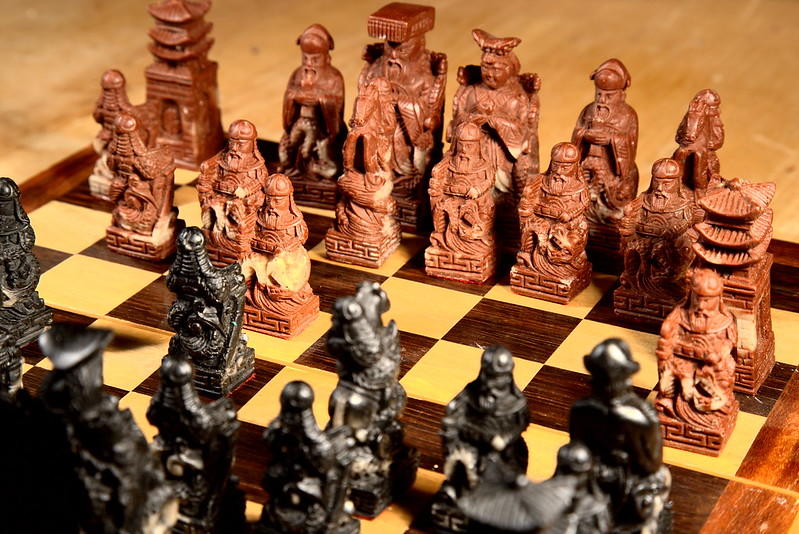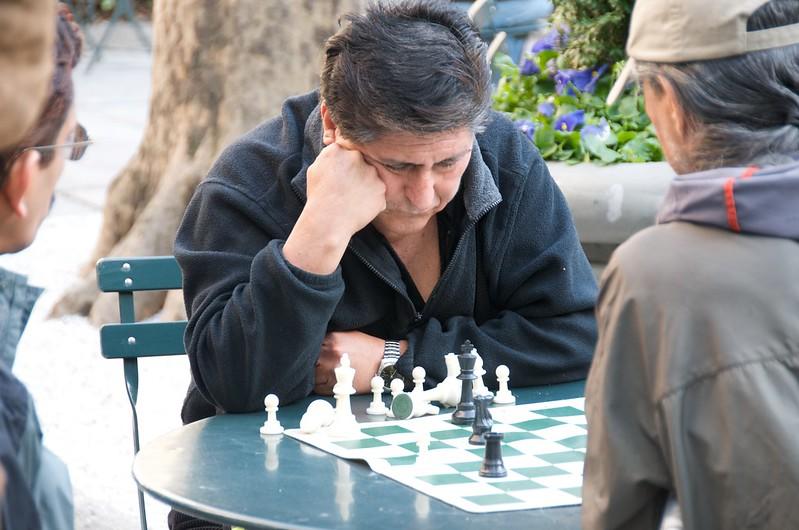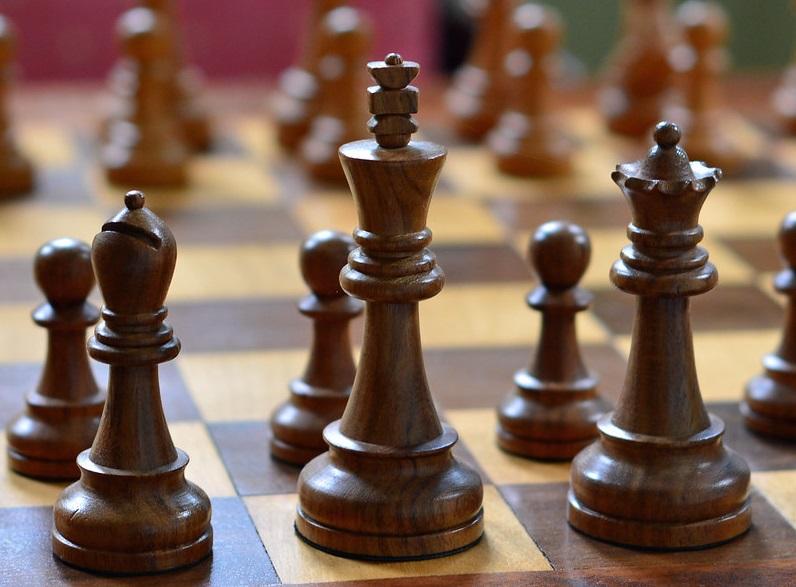Chess can be misleading and the Italian Game chess strategy is a good example of that. The reason is that Italian Game chess is neither a gambit nor game, but rather a collection of chess openings that begin with the same moves.
First, the kings' pawns face each other on the board’s centre, this is followed by the knights, kingside for White, but queenside for Black to defend them. In algebraic notation, those moves look like this: 1. e4 e5 2. Nf3 Nc6
There are other top chess openings – including the King’s Gambit, Scotch Game and Ruy Lopez that start with the same moves. The aspect that distinguishes the Italian Game chess opening from other Open Games is the early advancement of what’s called the Italian bishop – this kingside bishop, moves to C4. Bc4 sets up White’s third move.
What distinguishes the Italian Game from the rest of these Open Games is the early development of the so-called Italian bishop - the kingside bishop, to square c4. Bc4 constitutes White's third move.

Defining the Italian Game Chess Opening
As any chess fanatic knows, their much-loved game is millennia-old. It was first played in Ancient India and Persia. In fact, China still has their version which was played during the first century BC. By distinction, modern chess, the version we play today, only goes back a few centuries. So considering chess’s long history, it makes sense that many of the same openings would feature in several games.

Beginning in the 15th century, avid players always tried to organise their openings and gambits. One of the oldest works, the Göttingen manuscript, a 33-page work that is written in Latin and details a dozen games, includes a version of the Italian Game chess opening. However, this is where it can get a little confusing.
Most players understand the Italian Game chess opening notation as 1. e4 e5 2. Nf3 Nc6 3. Bc4, however, that opening is also recorded as Black’s more fleshed-out Giuoco Piano.
In this article, we distinguish between the opening as well as the direction that Italian opening chess can spur players to take.
And that to be clear, there are other Open Games, like the Scotch Game that are different to ones that play the Italian bishop.
Giuoco Piano
Like the King’s Gambit, the Giuoco Piano Italian game chess opening is a quiet game where both sides of the board develop their pieces quickly. Its notation is:
- e4 e5 2. Nf3 Nc6 3. Bc4 Bc5
Several accomplished players have favoured this version of Italian opening chess including Damiano and Greco. Remarkably these players were separated by almost a century, but both wrote about the Giuoco Piano. In the 20th Century, chess players had begun to pay attention to chess theory. For instance, they discovered that the Ruy Lopez opening could achieve similar results with fewer risks than the Italian Game chess strategy.
Once chess defence games became more refined, fewer players used the Giuoco Piano opening. It was more popular to show a preference for the following opening in this article.

Giuoco Pianissimo
Now really into the 'quiet game' territory, Giuoco Pianissimo attempts for a slower buildup by advancing the queen's pawn by only one square. This confrontation-delaying strategy endures the tension in the centre while it sets the stage for positional play. That slow-down sign is 4. d3.

There is a method to further defer the motion by first placing the queenside knights so that they, also, support the pawn’s central structure. Pianissimo's distinctive main line move to d3 then becomes the fifth move for White, noted: 4. Nc3 Nf6 5. d3. This is known as the Giuoco Pianissimo Deferred.
That’s not the only way to postpone confrontation in the centre. For example, White may want to claim more space queenside by playing its knight pawns and rook but, if it brings its (b4) bishop into retreat, the elaborate pawn structure will begin to look like aspects of the Ruy Lopez.
What does this very sedated type of play look like? 4. c3 Nf6 5. d3
So why stop at d3? Why doesn’t White advance its queen’s pawn to d4? That possible variation is called the Italian Gambit. It doesn't just tiptoe away from the quiet play of the Piano and Pianissimo openings, it heads full-tilt into the board’s centre. It is a frequently embraced variation to quiet play.
Two Knights Defence
So far, most of the discussion has focused on what White should or indeed, could play. Now, let's consider the Black side of the chessboard. To muster up the Two Knights's Defence, rather than the Black mirroring a bishop move (3. Bc4 Bc5), it positions its kingside knight to f3. This is seen as an aggressive move for Black; it is also an open invitation for White to attack its opponent's f2 pawn. Indeed, Black should prepare to lose a pawn if it wants a more tactical game. Using a strategy like this suggests there is a strong, confident player. It has even been played by well-known grandmasters like Boris Spassky and Mikhail Tal but, today, players of that calibre tend to shy away from 3. Bc4. Doing so takes any pressure off Black's f7 pawn, the main driver of this defence. In fact, there are some chess grandmasters and theoreticians who believe that Two Knights is less of a defence and more of a counterattack. The bottom line is this: if you are playing Black and you feel brave, give Two Knights a try. Who knows, you may find that you can make it work.
And if you are keen to improve your chess, learn the Queen’s Gambit too (just not via the TV series).
The Hungarian Defence
For Black to signal the need for a mellow game, there is nothing better than the Hungarian Defence. Blacks answer to the insistent challenge of 3. Bc4 with a mild 3. ... Be7. With its bishop crouched in front of the king - signalling that it is ready for action but would prefer to lay low, White is free to develop its pieces and command the centre. The only problem is that Black will have less leverage and less space in which to operate.
This is one reason why this defence is not often seen at tournament level even though many grandmasters with a preference for positional play have attempted to invoke it. Fun fact, this defence derived its name from another correspondence game between France and Hungary during the mid-19th century. Although their names have been lost, records indicate that these moves predate them by around 100 years.
Do you know how the French Defence differs from the Hungarian Defence? Which one would you play and why?

Other Unusual Moves for Black in Italian Game Chess
Of course, most chess players feel that playing Black gives them a disadvantage. Some grandmasters even think of it as a bad omen that predicts their imminent loss. Our view is that any opportunity to play chess is one worth taking and that playing black does not mean you will inevitably lose the game.
The trick to playing Black is to know your options because it will be how you respond that gives you the winning chance.
So in Italian Game chess you could master these:
- 3. ... d6 – which is called the Semi-Italian Opening, is not often seen today, however at one time, it was a popular response because it was known to provide solid positioning.
- 3. ... f5 - the Rousseau Gambit is a potential trap for inexperienced opponents and White would do better to respond with 4. d3.
- 3. ... h6 is normally counterproductive, however, it can be helpful because there is no immediate response or refutation for it. Unfortunately, it can cost you in piece development, though.
- 3. ... Nd4 – called the Blackburne Shilling Gambit is not a true gambit and, in addition, it is weak. However, if your opponent is a novice, you could possibly snare them into a quick checkmate.
The Italian Game chess strategy is designed to play on White's strengths, however, Black has just as many possible variations to choose from. You will only need to work out which ones are most appropriate at which point in the game to help you win the match. Or, at the very least, hold your own. So now that you understand the Italian Game chess strategy, would you like to find out how to play the Sicilian Defence for your gain?















